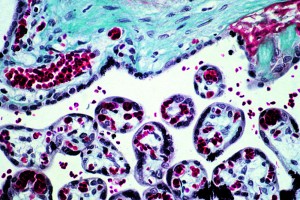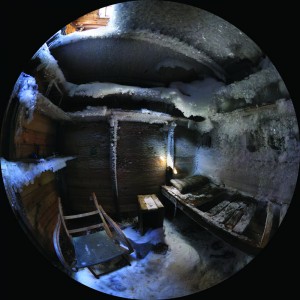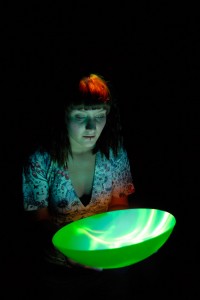Artists and scientists approach creativity, exploration and research in different ways and from different perspectives; when working together they open up new ways of seeing, experiencing and interpreting the world around us.For over a decade, the Australian Network for Art & Technology (ANAT) has supported artists and scientists to work on collaborative research projects, leading to the creation of new knowledge, ideas and processes beneficial to both fields – in short, advancing the role the arts play in Australia’s innovation system.
ANAT’s most recent art science projects, delivered in partnership with the Australia Council for the Arts, include: the Synapse Database, a research tool containing detailed information on partnerships between artists and scientists worldwide; the Synapse Elist, a moderated series of discussions taking place throughout 2008 bringing together international experts on topics as diverse as bioart, robotics, outer space, cognition, mapping and climate change; and the Synapse Residencies, which support intensive partnerships between media artists and scientists in research settings in Australia and beyond.
ANAT is thrilled to announce the successful Synapse residency recipients for 2008/09…
Dr Rachel Burgess (NSW) + Dr Vicki Clifton (School of Paediatrics & Reproductive Health, University of Adelaide, SA)
Burgess and Clifton are building on their previous work investigating microchimerism, a process in which the cells from a mother and her child exist in each other’s vascular systems and organs for the duration of their lives. In some situations there is an excessive transfer of cells between mother and child, causing disease and, in some cases, death. The project will examine the physical interaction between maternal and placental (fetal) cells in situ and, as well as the expected scientific outcomes, will lead to the production of an artistic work spring-boarding from the literal into a metaphorical investigation of the maternal bond.
Nicky Forster & Willoh Weiland (VIC) + Dr Chris Fluke (Centre for Astrophysics & Supercomputing, Swinburne University, VIC)
Swinburne’s Centre for Astrophysics & Supercomputing (CAS) continues its strong commitment to inter-disciplinary research, having previously hosted ANAT residencies in 2004 and 2007. In this project, Forster and Weiland resume their successful partnership investigating issues in contemporary astronomy by drawing upon the research obsessions and cosmological programs resulting from the Centre’s involvement in the Square Kilometre Array (SKA), a new-generation radio telescope. For the duration of the residency (which, aptly, continues into 2009 – the International Year of Astronomy), the duo will podcast a soap opera in fortnightly instalments organised around the key project areas of the SKA, invigorating existing models of scientific outreach in the process.
Dr Peter Morse (TAS) + Dr Martin Riddle (Australian Antarctic Division, TAS) + Paul Bourke (WA Supercomputer Project, University of Western Australia, WA)
Morse draws on his substantial experience in digital media production to create work engaging with the Antarctic region. His more recent works have utilised 3D, stereoscopic and 360° immersive technologies, leading to a continuing interest in the visualisation of complex datasets. Working with data provided by the AAD and using the computer resources and expertise at WASP, Morse and his collaborators will create volumetric visualisations for the full-dome (planetarium) format representing both empirical and aesthetic features of the data and eliciting an understanding of complex connections between parameters that would not have been revealed or communicated in any other way.
Lynette Wallworth (NSW) + Dr Anya Salih (Confocal Bio-imaging Facility, University of Western Sydney, NSW)
Wallworth and Salih worked together in 2001 and again in 2007 on Hold: Vessels 1 & 2. Their current project draws on Salih’s ground-breaking research into the photoprotective function of GFP (green fluorescent protein) in corals and Wallworth brings this together with a study into a luminescent bacteria (Photorhabdus luminescens) thought to be responsible for the increased efficacy of wound-healing in humans in extreme temperatures. The combination of these disparate research fields is made possible by the CBIF’s capacity to analyse changes in living cells over time, with the resulting datasets forming the basis of an interactive installation utilising Wallworth’s experiments with luminescent glass carried out in 2006.
Read More
http://weilandforster.anat.org.au/
http://www.petermorse.com.au/projects/benthos/
Watch More
A short overview of work-in-progress visualising the GEBCO dataset (General Bathymetric Chart of the Oceans). This work has been created as part of Peter Morse’s ANAT Synpase Residency.
Visualising GEBCO: A new way of seeing the global oceans (2009) from Peter Morse on Vimeo.
 This work is licensed under a Creative Commons Attribution-NonCommercial-ShareAlike 2.5 Australia.
This work is licensed under a Creative Commons Attribution-NonCommercial-ShareAlike 2.5 Australia.










